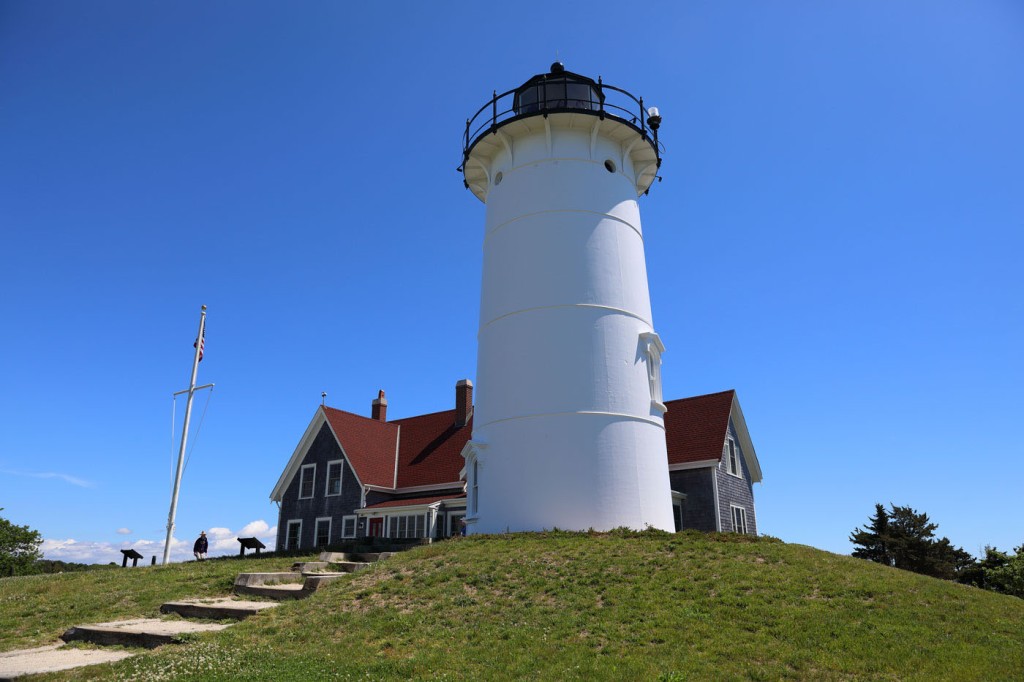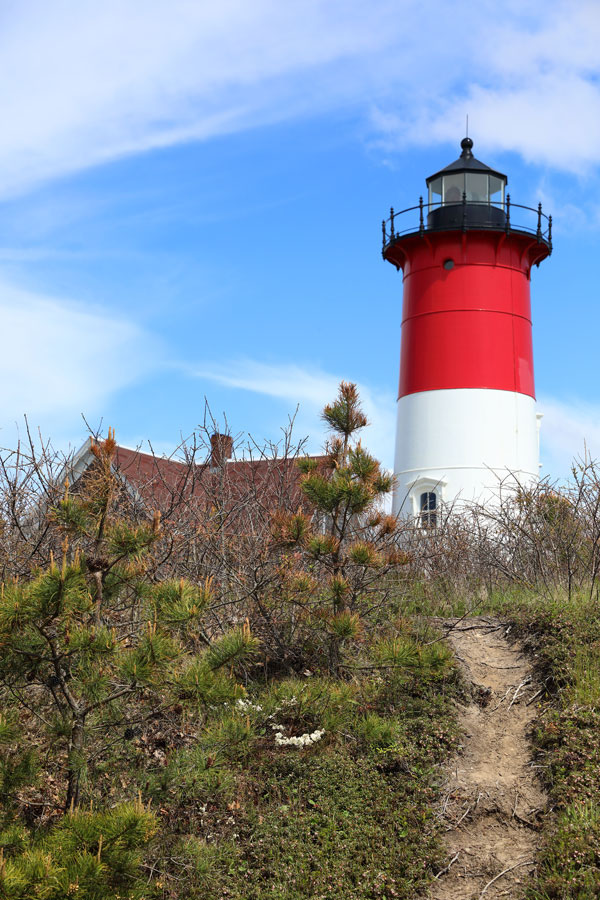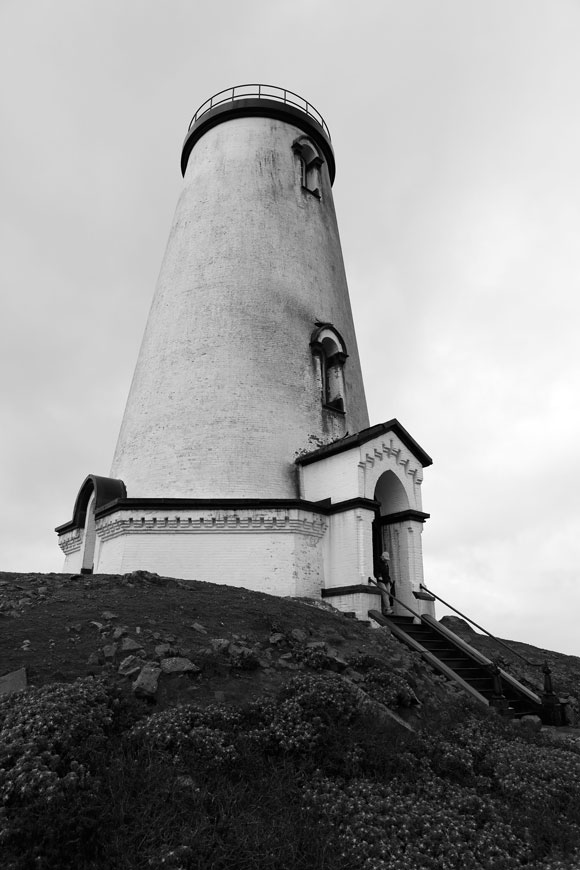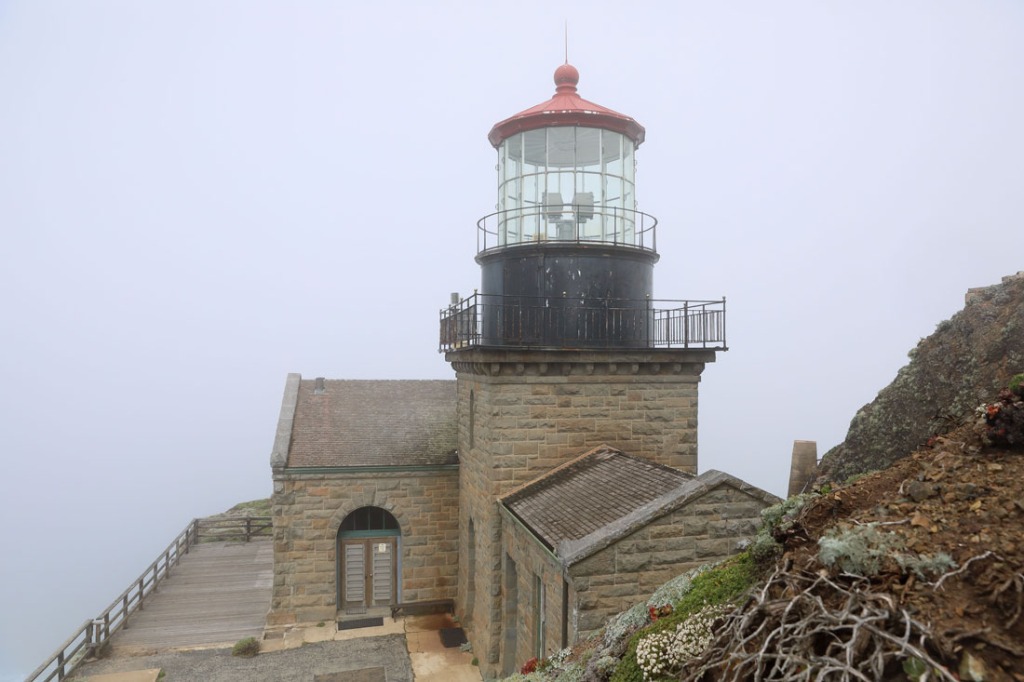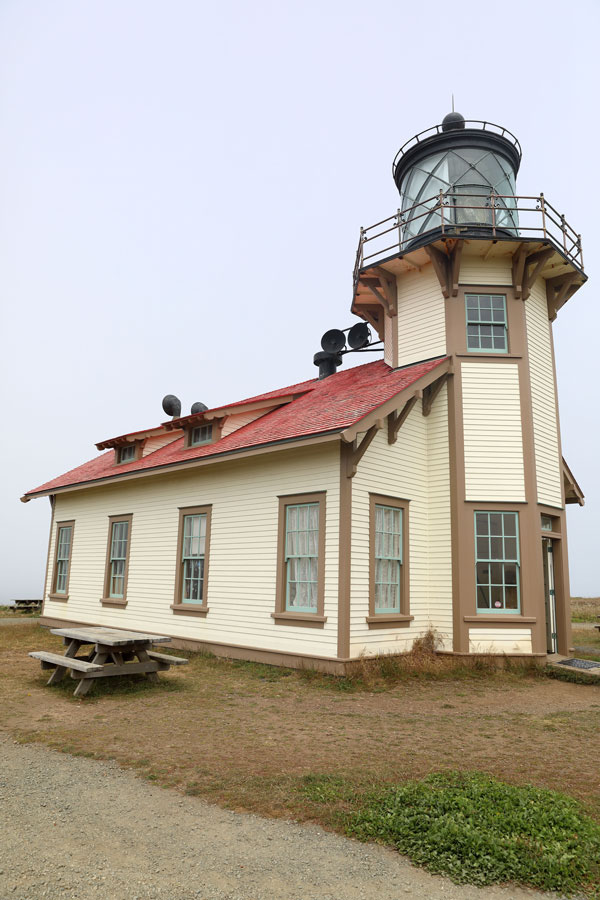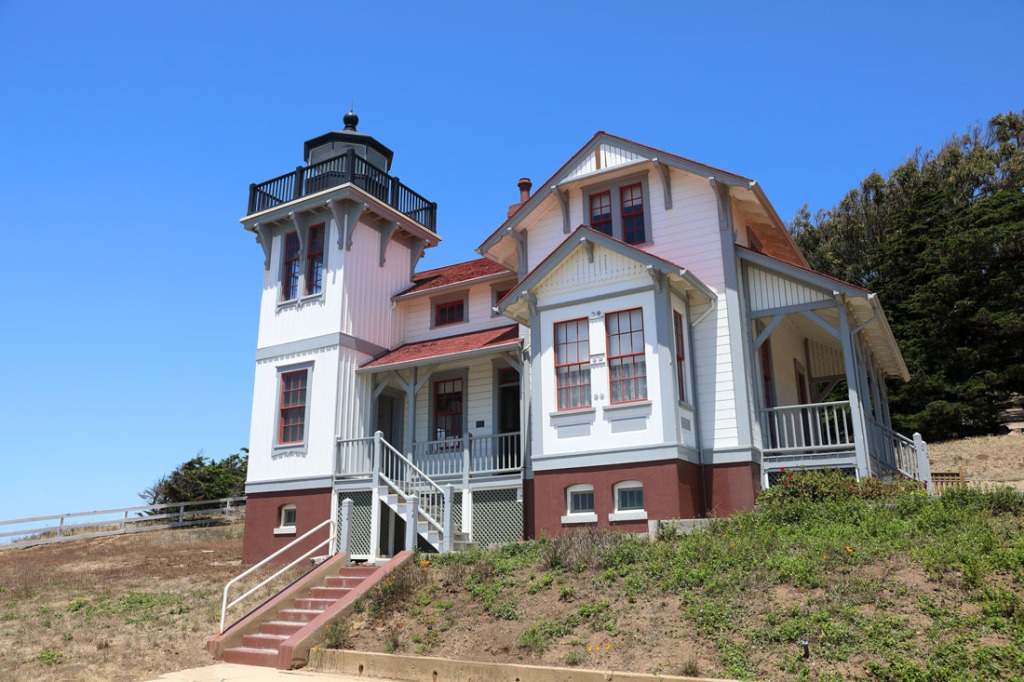It’s strange to see a lighthouse without its top.
But it’s also a unique situation that would leave a lighthouse looking this way.
And that’s exactly the case with the Piedras Blancas Light Station.
Originally standing at 100 feet, the Piedras Blancas Light Station is now reduced to about 70 feet. Over the years it suffered damage from earthquake after earthquake until, in the late 1940s, one final earthquake rendered it structurally unsound. In 1949 the top three levels – fourth floor landing, watch room, and lantern – were removed.
Construction on Piedras Blancas Light Station began in April 1874 and was complete by February the following year. It was illuminated for the first time on February 15, 1875.
A fog signal building was constructed in the early 1900s.
As was the case at numerous lighthouses, if not all lighthouses, the life of a keeper was difficult. Not only did they face adverse weather conditions, but they also struggled with how to obtain a proper supply of food and water. Their lives were one of isolation while their work was labor intensive.
At Piedras Blancas Light Station fishing was a popular pastime and plenty of abalone was collected for food. As for water, keepers collected rainwater from the roof. At other times water had to be purchased and brought by wagon.
Despite the harsh weather, isolation, and difficult lifestyle, Piedras Blancas Light Station is a beautiful place.
Today there is a trail that leads around the perimeter, runs parallel to the coast. Walking the trail is both beautiful and peaceful. There’s plenty of interesting rock formations as well as plant and sea life. Flowers and other plants grow on land while elephant seals, sea lions, sea otters, gray whales, and many other animals have a chance to be spotted.
The fuel building still exists and continues to hold the lingering scent of gasoline.
The fog signal building, originally built in 1906, has been restored.
The entrance gate (1910) and the water tower have had beautiful replicas constructed.
The Piedras Blancas Light Station still has no top. The goal is to one day restore the tower and lighthouse to its former glory. Still, even missing it’s last three levels, it doesn’t take away from this lighthouse, or this place, any of its history or beauty.


